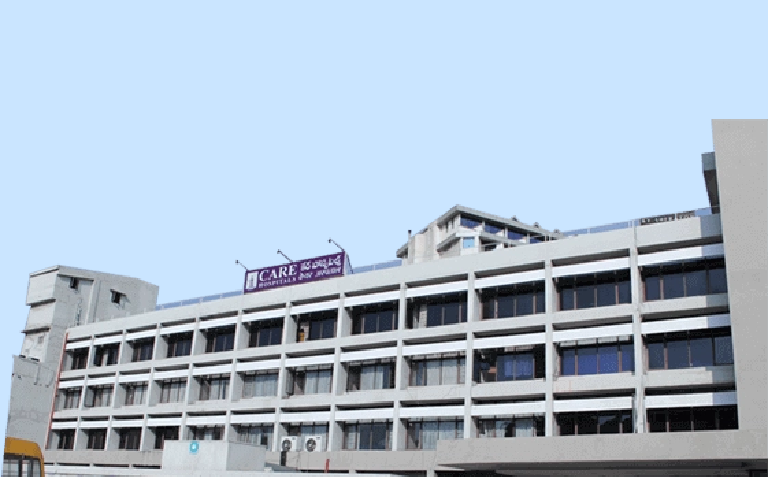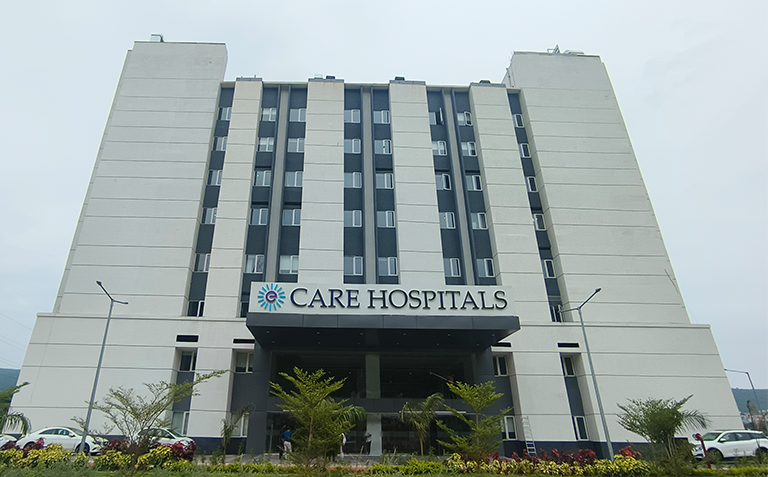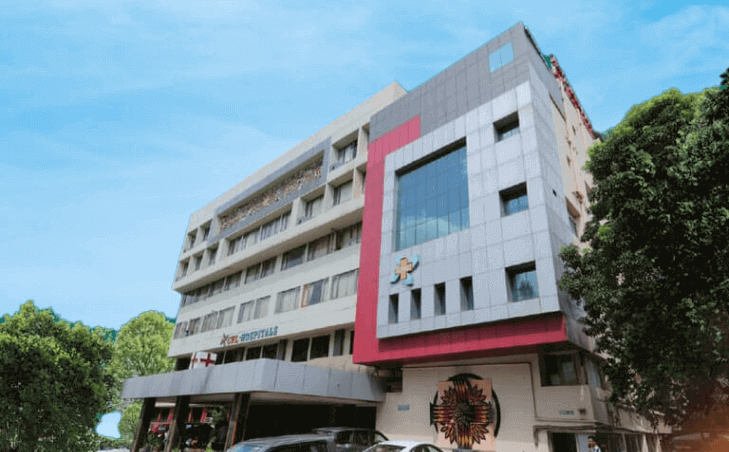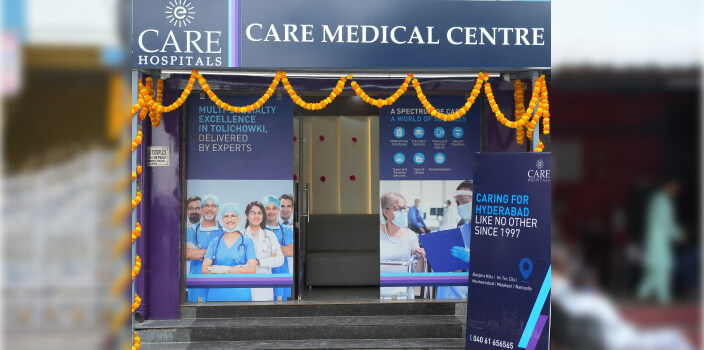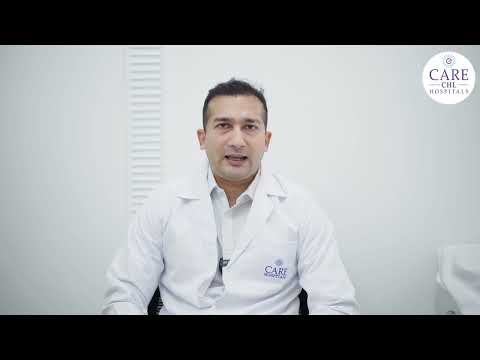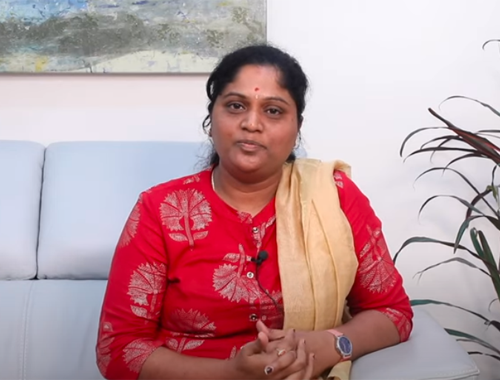-
Doctors
-
Specialities & Treatments
Centre of Excellence
Specialties
Treatments and Procedures
Hospitals & Directions HyderabadCARE Hospitals, Banjara Hills CARE Outpatient Centre, Banjara Hills CARE Hospitals, HITEC City CARE Hospitals, Nampally Gurunanak CARE Hospitals, Musheerabad CARE Hospitals Outpatient Centre, HITEC City CARE Hospitals, Malakpet
HyderabadCARE Hospitals, Banjara Hills CARE Outpatient Centre, Banjara Hills CARE Hospitals, HITEC City CARE Hospitals, Nampally Gurunanak CARE Hospitals, Musheerabad CARE Hospitals Outpatient Centre, HITEC City CARE Hospitals, Malakpet Raipur
Raipur
 Bhubaneswar
Bhubaneswar Visakhapatnam
Visakhapatnam
 Nagpur
Nagpur
 Indore
Indore
 Chh. Sambhajinagar
Chh. SambhajinagarClinics & Medical Centers
Book an AppointmentContact Us
Online Lab Reports
Book an Appointment
Consult Super-Specialist Doctors at CARE Hospitals

Arthroscopy & Sports Medicine
Arthroscopy & Sports Medicine
Arthroscopy Surgery Hospital in Hyderabad, India
Sports Medicine
The speciality of Sports Medicine deals with preventing, diagnosing, treating, and rehabilitating injuries caused by athletic activity. The majority of these disorders are treated using arthroscopic surgery, a minimally invasive technique. Sports injuries requiring support can be treated with PRP injections & Kinesio taping techniques.
In Sports Medicine, orthopaedic surgeons, non-operative sports specialists, rehabilitation specialists, athletic trainers, and physical therapists work together as a team. CARE Hospitals is one of the best hospital for sports injuries which has the most skilled and experienced Sports Medicine Team. Our specialists perform thousands of sports surgeries for athletes of all levels each year using improved surgical techniques and advanced equipment.
Arthroscopy
At CARE Hospitals, orthopaedic surgeons treat various bone and joint disorders with advanced and minimally invasive techniques. Orthopaedic surgeries with minimally invasive techniques are usually performed using an arthroscope, a thin, special tool designed to view and treat problems inside the joints. Unlike large incisions, the arthroscope requires only one or more tiny cuts through the skin to access the joint.
An arthroscope is equipped with an advanced miniature camera and a specialized lighting system that make it possible for the structures inside the joint to be viewed on a monitor. In addition to the arthroscope, the surgeon can attach tools to the end to remove tissue or bone that has become inflamed.
When is arthroscopy recommended?
Arthroscopy is typically suggested by surgeons for repairing full or partial ligament tears, addressing torn cartilage, treating conditions such as rotator cuff tears, frozen shoulder, hip issues, and spine problems like herniated discs or degenerative disc diseases. Additionally, it is recommended for addressing general spine trauma and femoroacetabular impingement (FAI), as well as other degenerative conditions. To make a diagnosis, the doctor primarily relies on MRI scans, supplemented by X-rays if necessary.
How is Arthroscopy done?
Arthroscopy is a minimally invasive surgical procedure used to diagnose and treat problems in joints. It is commonly performed on knees, shoulders, ankles, wrists, hips, and elbows.
- Preparation: Before the procedure, the patient is typically given anesthesia to ensure they are comfortable and pain-free during the surgery. The type of anesthesia used can vary depending on the joint being operated on and the patient's medical history.
- Incision: The surgeon makes small incisions near the joint that is being examined or treated. These incisions are usually about the size of a buttonhole.
- Insertion of Arthroscope: An arthroscope, which is a thin, flexible tube with a camera and light source attached to it, is inserted through one of the incisions. This allows the surgeon to see inside the joint without the need for large incisions.
- Visualization: The camera attached to the arthroscope sends real-time images of the inside of the joint to a monitor in the operating room. This gives the surgeon a clear view of the structures within the joint, including the cartilage, ligaments, and tendons.
- Treatment (if necessary): If any problems are detected during the diagnostic phase, the surgeon may use small surgical instruments inserted through the other incisions to perform repairs or other treatments. Common procedures done through arthroscopy include repairing torn ligaments or cartilage, removing loose fragments of bone or cartilage, and smoothing out rough surfaces.
- Closure: Once the procedure is complete, the surgical instruments are removed, and the incisions are closed with sutures or adhesive strips. In some cases, a sterile dressing or bandage may be applied to the incision sites.
- Recovery: After the surgery, the patient is taken to a recovery area where they are monitored until the effects of the anesthesia wear off. Depending on the complexity of the procedure and the patient's individual circumstances, they may be able to go home the same day or may need to stay in the hospital overnight for observation.
- Post-operative care: The surgeon will provide instructions for post-operative care, including pain management, wound care, and rehabilitation exercises. Physical therapy may be recommended to help restore strength and mobility to the joint.
Benefits of Arthroscopy
Arthroscopy offers several advantages over traditional open surgery, making it a preferred option for many patients and surgeons alike. Here are some of the key benefits:
- Minimally Invasive: As arthroscopy involves smaller incisions, it is less invasive compared to open surgeries. This minimizes the damage to surrounding tissues.
- Reduced Pain and Discomfort: Patients generally experience less postoperative pain and discomfort due to the minimally invasive nature of the procedure.
- Shorter Recovery Time: The recovery period following arthroscopy is typically shorter than after open surgery. This allows patients to return to their daily activities and work more quickly.
- Lower Risk of Complications: The risk of complications such as infections and bleeding is lower with arthroscopic procedures than with traditional surgeries.
- Improved Accuracy: The use of a camera provides surgeons with a clear view of the inside of the joint. This enhanced visualization can lead to a more accurate diagnosis and treatment.
- Less Scarring: Smaller incisions mean less scarring, which is both a cosmetic and functional benefit, as large scars can sometimes limit movement.
- Outpatient Procedure: Many arthroscopic surgeries can be performed on an outpatient basis, meaning patients can go home the same day of the procedure.
- Faster Return to Physical Activities: Athletes and physically active individuals often prefer arthroscopy since it enables a quicker return to sports and physical activities compared to open surgery.
- Diagnostic and Therapeutic: Arthroscopy can be used both for diagnosing and treating joint problems, which means a condition can be confirmed and corrected in a single procedure.
At CARE Hospitals, more than 300 arthroscopic procedures are performed each year. Surgical procedures involving the joints, such as arthroscopic or keyhole, are routinely performed. Arthroscopy is generally used to repair cartilage or meniscus damage in the knee and rotator cuff tears in the shoulder and hip resurfacing.
Our Locations
CARE Hospitals, a part of the Evercare Group, brings international quality healthcare to serve patients across the world. With 16 healthcare facilities serving 7 cities across 6 states in India, we are counted among the top 5 pan-Indian hospital chains.
-
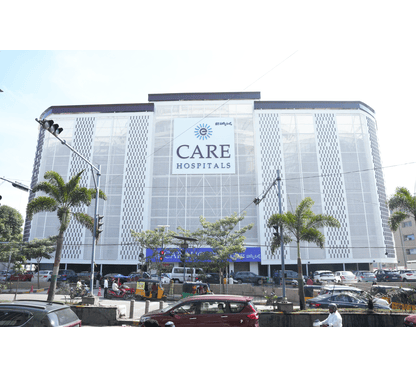
CARE Hospitals, Banjara Hills, Hyderabad
Road No.1, Banjara Hills, Hyderabad, Telangana - 500034
-
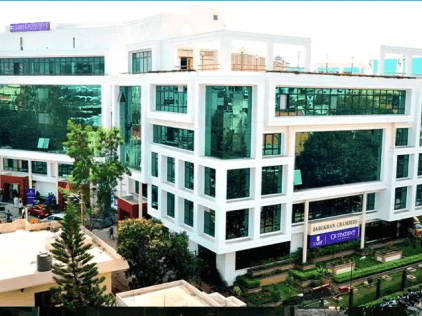
CARE Hospitals Outpatient Centre, Banjara Hills, Hyderabad
BabuKhan Chambers, Road No.10, Banjara Hills, Hyderabad, Telangana - 500034
-
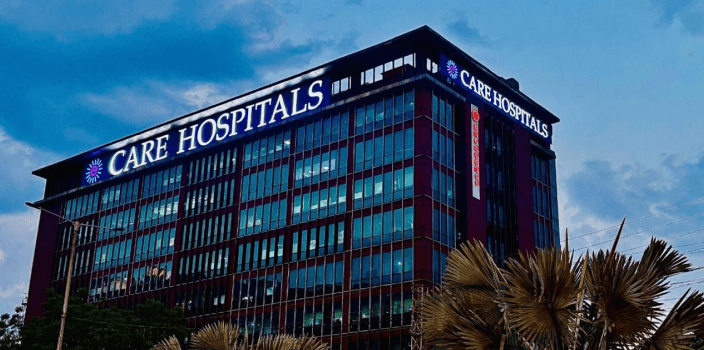
CARE Hospitals, HITEC City, Hyderabad
Old Mumbai Highway, Near Cyberabad Police Commissionerate, Jayabheri Pine Valley, HITEC City, Hyderabad, Telangana - 500032
-
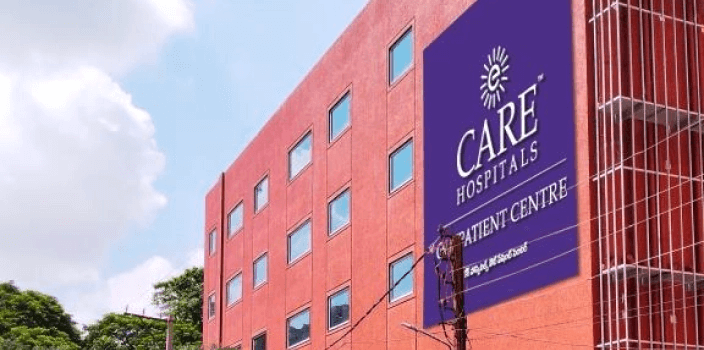
CARE Hospitals Outpatient Centre, HITEC City, Hyderabad
Jayabheri Pine Valley, Old Mumbai Highway, Near Cyberabad Police Commissionerate HITEC City, Hyderabad, Telangana - 500032
-
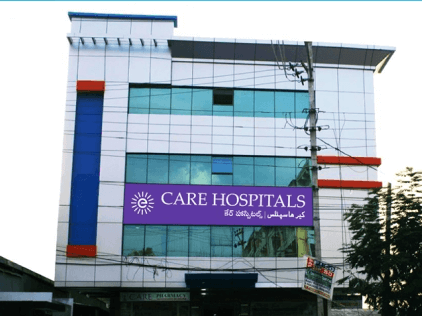
Gurunanak CARE Hospitals, Musheerabad, Hyderabad
1-4-908/7/1, Near Raja Deluxe Theatre, Bakaram, Musheerabad, Hyderabad, Telangana – 500020
-
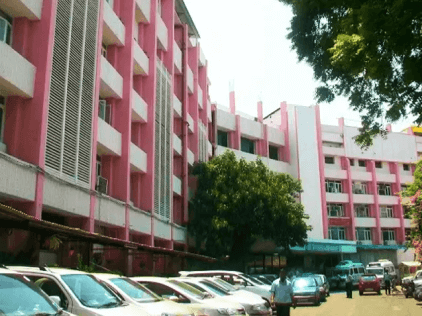
CARE Hospitals, Nampally, Hyderabad
Exhibition Grounds Road, Nampally, Hyderabad, Telangana – 500001
-
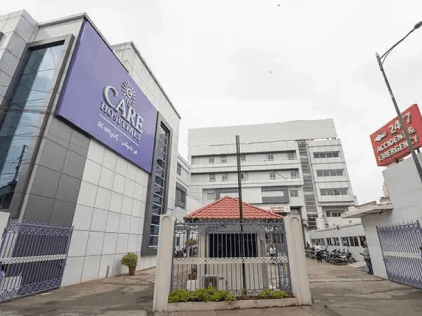
CARE Hospitals, Malakpet, Hyderabad
16-6-104 to 109, Old Kamal Theater Complex Chaderghat Road, Opp Niagara Hotel, Chaderghat, Hyderabad, Telangana - 500024
-
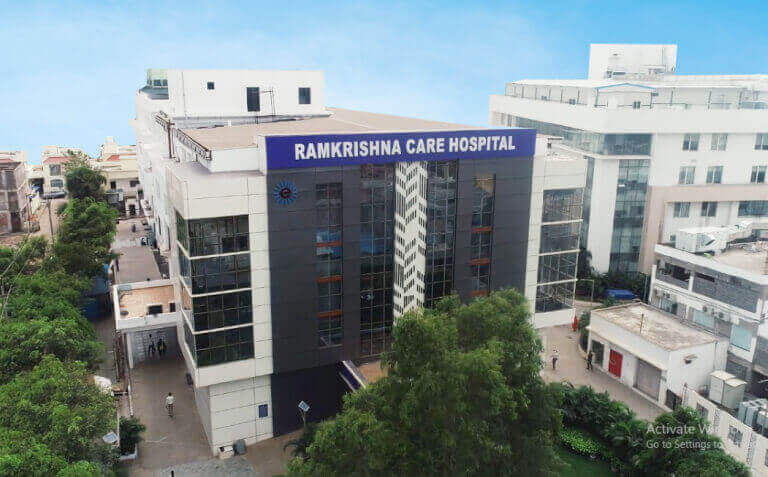
Ramkrishna CARE Hospitals, Raipur
Aurobindo Enclave, Pachpedhi Naka, Dhamtari Road, Raipur, Chhattisgarh - 492001
-
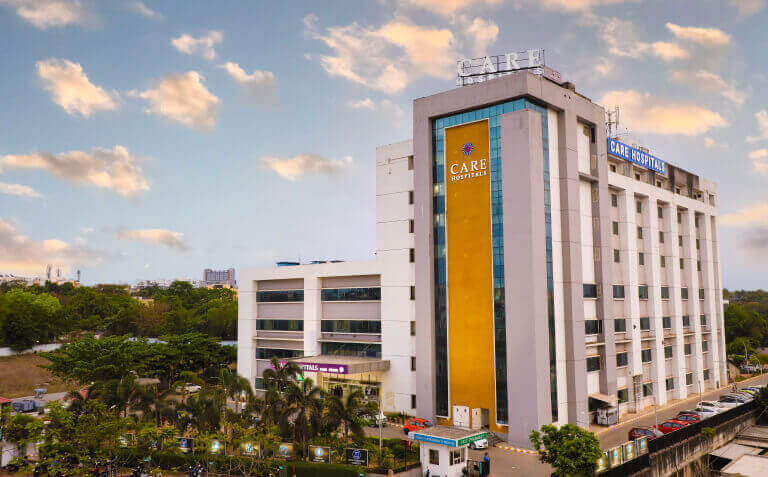
CARE Hospitals, Bhubaneswar
Unit No.42, Plot No. 324, Prachi Enclave Rd, Rail Vihar, Chandrasekharpur, Bhubaneswar, Odisha - 751016
-
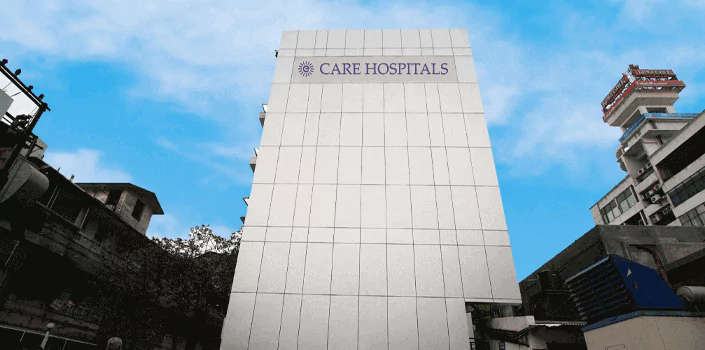
Ganga CARE Hospital Limited, Nagpur
3 Farmland, Panchsheel Square, Wardha Road, Nagpur, Maharashtra – 440012
-
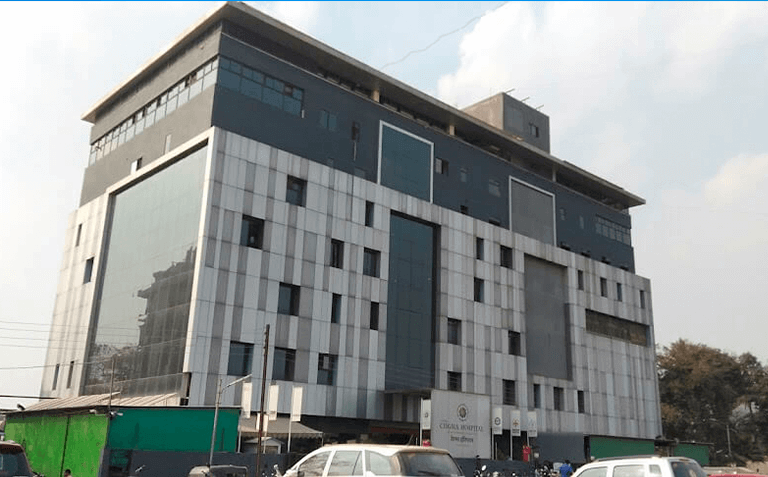
United CIIGMA Hospitals (A unit of CARE Hospitals), Chh. Sambhajinagar
Plot no 6, 7, Darga Rd, Shahnoorwadi, Chh. Sambhajinagar, Maharashtra 431005
Doctor Videos
Frequently Asked Questions
Still Have a Question?






